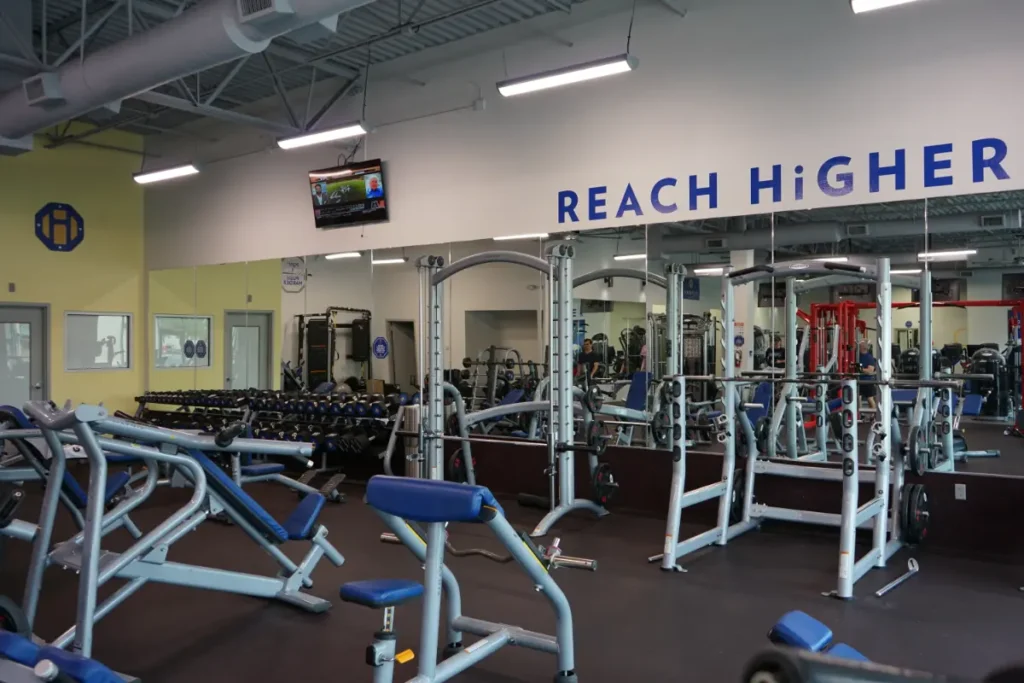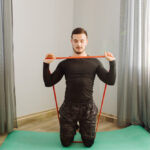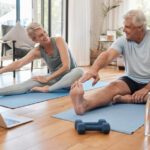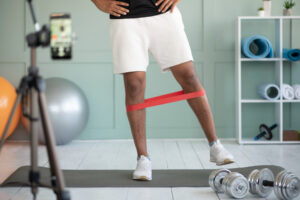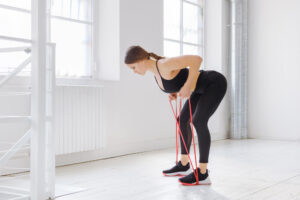Cardiovascular exercise, often simply called cardio, is a crucial component of any fitness regimen. Its importance cannot be overstated. It’s not just about fitting into that little black dress or looking great in a bikini – though, those are nice perks too. It’s about your health and well-being.
Cardio can positively impact your life in countless ways. It can boost your mood, strengthen your heart, improve lung efficiency, reduce stress, and yes, aid in weight loss. When we engage in cardio, we are not only working towards a more toned and fit body, but we’re also promoting longevity and enhancing our quality of life.
But let’s face it, we’re all busy. Between juggling work, family, and social commitments, and somehow managing to catch a few Z’s, finding time for a workout can feel like trying to find a needle in a haystack. And when we do manage to carve out some time for exercise, we want to make sure we’re getting the most bang for our buck.
What is your goal?
Before we dive into the specifics of each workout, it’s important to identify what you’re aiming for. Cardio isn’t a one-size-fits-all kind of deal. Depending on your fitness goals, different types of cardio workouts will be more effective for you.
Weight loss
If you’re looking to shed some pounds, High-Intensity Interval Training (HIIT) might be your golden ticket. HIIT involves short bursts of intense exercise followed by brief recovery periods. This type of training revs up your metabolism and keeps it elevated for hours after your workout, meaning you’re burning calories even when you’re not working out. Think of exercises like jump squats, burpees, or sprinting – they’re tough, but boy, do they torch calories!
Endurance improvement
Perhaps you’re training for a marathon or simply want to increase your stamina. Cardio workouts that involve steady, prolonged activities like long-distance running, cycling, or swimming are your best bet. These exercises will help your body build endurance and stamina over time. Remember, it’s not about speed here; it’s about maintaining a consistent pace for a longer duration.
Heart health
If you’re focused on improving your heart health, you might want to consider a blend of both HIIT and steady-state cardio workouts. HIIT workouts are excellent for strengthening your heart, while steady-state cardio can help lower your resting heart rate and blood pressure. Remember, your heart is a muscle too, and like any muscle, it needs to be worked to stay strong and healthy.
Best cardio workouts for women
Let’s get a more detailed breakdown and how you should implement those workouts into your lifestyle.
Walking
Walking is often overlooked in the world of fitness, but it’s actually a fantastic, beginner-friendly way to dip your toes into the realm of cardio. It’s a low-cardio fitness option that can help you burn extra calories without putting too much strain on your joints.
Walking is gentler on your body than running, making it an ideal choice for those just starting their fitness journey or those looking for a less strenuous form of exercise. You don’t need a fancy gym membership or expensive equipment. All you need is a pair of comfortable shoes and the motivation to get moving.
In addition to its physical benefits, walking can also be a great way to relax and unwind after a stressful day. It’s just you and the open road (or treadmill, or trail). You can use this time to clear your mind, listen to your favorite podcast, or even catch up on phone calls. Walking can be a peaceful, meditative experience that can help reduce stress and improve your overall mental well-being.
Take stairs
Ready to take your low-cardio fitness up a notch? Start taking the stairs. This simple, everyday activity can be a surprisingly intense workout. Think of stair climbing as walking’s more challenging older sibling – it’s still low-impact but with an added element of difficulty.
Stair climbing engages your body’s largest muscle groups to lift your body weight up, step after step, so you’ll burn more calories than you do walking. It’s a fantastic way to strengthen and tone your lower body – your glutes, quads, hamstrings, and calves are all put to work when you’re climbing those steps.
And the best part? Stairs are everywhere! You can find them at home, at work, in parks, and even in some fitness centers. So, next time you’re faced with the choice between an elevator or stairs, opt for the latter.
HIIT workouts
High-Intensity Interval Training, or HIIT as it’s commonly known, is a game-changer in the world of cardio. This type of workout involves alternating between periods of intense effort and short, sometimes active, recovery. The result? A super-efficient workout that burns a ton of calories in a relatively short amount of time.
Now, I know what you’re thinking. “High-intensity? That sounds intimidating!” But here’s the beauty of HIIT workouts – when led by professional instruction, they can be suitable for all fitness levels.
Here’s how it works. During the high-intensity periods, you’re pushing yourself almost to your max, and then you back off for a short recovery period before going hard again. The key is that you’re working at your own maximum effort, not anyone else’s. So whether you’re a fitness newbie or a seasoned pro, you can adjust the intensity to fit your fitness level.
Another great thing about HIIT workouts is their versatility. You can apply the high-intensity interval principle to almost any type of exercise – running, cycling, swimming, jump roping, or even stair climbing. However, ensure that your workout lasts the right amount of time.
Running
This tried-and-true workout has stood the test of time for a reason. It’s an effective, full-body workout that not only burns a ton of calories but also offers a host of other health benefits.
Running is a powerful tool in your fitness arsenal. It can help you shed pounds, improve your cardiovascular health, boost your mood, and increase your endurance. Plus, it’s a great way to get outdoors and enjoy some fresh air.
But don’t be fooled into thinking you need to be ultra-fast or able to run a marathon to reap the benefits of this workout. Running at a comfortable pace, even if it’s slower than a brisk walk, can still offer significant health benefits.
For beginners, a walk/run approach can be an effective way to ease into running. Start by walking for a few minutes, then run for a minute, and repeat. Gradually increase your running intervals as your fitness level improves.
Swimming
This low-impact exercise is a total-body workout that can help you tone up, slim down, and boost your cardiovascular health.
It allows you to work your body without putting a lot of stress on your joints, making it an excellent option for those with arthritis or other joint issues. It’s also a great choice for those looking for a more gentle form of cardio, or for those who simply love the water.
But don’t be fooled by its low-impact nature. Swimming is a highly effective workout. Because water is denser than air, every movement you make in the pool requires more effort, which means you’re burning more calories and strengthening your muscles. Plus, swimming engages all of your major muscle groups, from your arms and legs to your back and core.
Jumping ropes
Jumping ropes isn’t just for kids on the playground – it’s a killer cardio workout that can burn a ton of calories in a short amount of time. This high-intensity exercise gets your heart rate up fast, making it an ideal option if you’re looking to get a quick but effective workout.
It can help you improve your coordination, agility, and speed, all while toning your calves, glutes, and core. It’s a full-body workout that requires minimal equipment. All you need is a jump rope and a bit of space.
One of the great things about jumping rope is its versatility. You can easily adjust the intensity of your workout by increasing or decreasing the speed of your jumps. You can also mix up your routine by incorporating different types of jumps, like high knees, butt kicks, or single-leg jumps.
If you’re a beginner, start with shorter periods of jumping interspersed with rest periods. As your fitness level improves, you can increase the duration of your jumping periods and decrease your rest periods.
Dancing classes
If traditional cardio workouts aren’t your thing, or you’re simply looking for a fun way to mix up your routine, why not try a dance class? Dancing is a fantastic way to get your heart rate up, burn calories, and tone your body, all while having a great time.
Dance classes come in all shapes and sizes, from Zumba to hip-hop, ballet to salsa, and everything in between. No matter what your fitness level or dance ability, there’s a dance class out there that’s perfect for you.
One of the great things about dance classes is that they’re usually set to upbeat music, which can help to keep you motivated and make your workout more enjoyable. Plus, learning new dance moves can be a fun challenge that keeps you engaged and looking forward to your next class.
If you’re a beginner, don’t be intimidated. Most dance classes are designed to accommodate all levels, and the focus is on having fun, not on being a perfect dancer. Just follow along as best as you can and remember that it’s okay to make mistakes.
Cycling classes
Cycling classes, often referred to as spinning classes, are a fantastic way to get your heart pumping and your legs burning. These high-energy classes have become a staple in many fitness centers, and for good reason – they offer an intense workout that can help you burn a ton of calories and improve your cardiovascular fitness.
Cycling classes typically involve riding a stationary bike while an instructor guides you through a series of drills, from fast-paced sprints to slow, heavy climbs. The resistance on the bike can be adjusted to match your fitness level, making cycling classes suitable for beginners and seasoned pros alike.
Cycling classes can also be a fun way to mix up your cardio routine. They’re set to upbeat music, and the group setting can provide a sense of community and camaraderie that can help keep you motivated.
But don’t be fooled by the fun atmosphere – cycling classes can be tough. They’re designed to push you and challenge your endurance, so be prepared to sweat! Just remember to listen to your body and adjust the resistance on your bike as needed.
How much cardio do you need?
It is recommended to get at least 150 minutes of moderate-intensity or 75 minutes of high-intensity cardio exercise per week.
But let’s be real, we’re all unique and our bodies have different needs and capabilities. While 150 minutes a week is a great guideline, it’s crucial to listen to your body. Some weeks, you might feel energized and ready to conquer the world, managing to clock more than 150 minutes. Other weeks, you might feel like you’re running on empty and struggle to hit that number. That’s okay! Fitness isn’t a one-size-fits-all situation.
If you’re just starting or coming back from a break, 150 minutes might seem daunting. Don’t worry, it’s perfectly okay to start with a lower number and gradually work your way up as your fitness improves. The most important thing is to get moving and stay consistent.
How often should you do cardio?
A general guideline is to aim for three to five cardio workouts per week.
Dividing your cardio workouts throughout the week allows your body to recover and adapt to the new exercise regimen. It also helps to prevent burnout and keeps you from getting bored.
While the idea of doing all 150 minutes of recommended cardio in one day might sound appealing (get it over with, right?), this approach can do more harm than good. Overdoing it can lead to fatigue, injury, and a decreased likelihood that you’ll stick with your fitness routine in the long run. Plus, spreading out your workouts ensures that you’re constantly burning calories and boosting your metabolism throughout the week.
Final thoughts
Whether you’re a fan of walking, running, cycling, or dancing, there’s a cardio workout out there that’s perfect for you.
Remember, the goal is to get moving and keep moving. Aim for 150 minutes of cardio per week, but don’t stress if you fall short or exceed that number. The most important thing is to listen to your body and find a routine that you enjoy.
Cardio isn’t just about burning calories and losing weight. It’s about improving your heart health, boosting your mood, increasing your endurance, and enhancing your overall quality of life. So, don’t think of it as a chore, but rather as an investment in your health and well-being.

